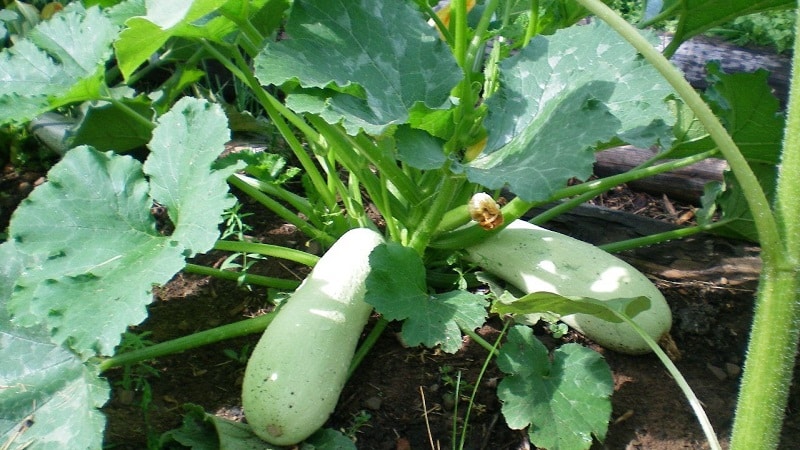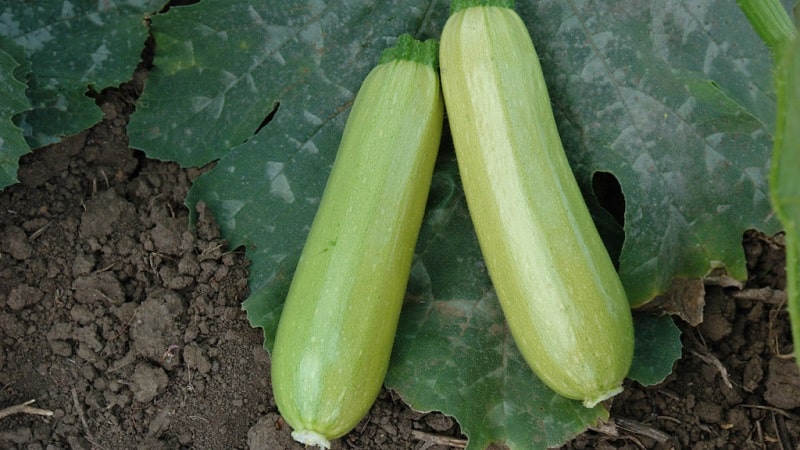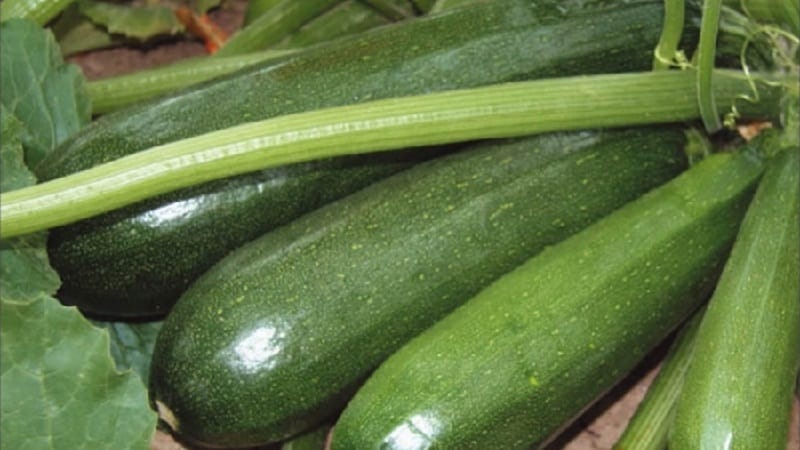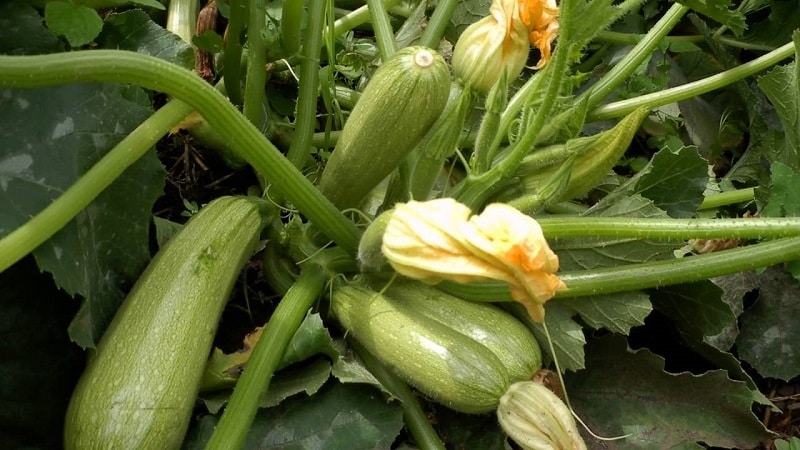Domestic and imported bush varieties of zucchini: the most popular representatives and their features
Until the 16th century, because of its bright and beautiful flowers, zucchini was used exclusively as an ornamental plant. Today this vegetable is found in every garden. The fruits have a pleasant neutral taste and a rich vitamin composition.
In this article we will look at the best varieties of bush zucchini for open ground. Let's find out what their specifics are and how to grow them correctly.
What is special about bush zucchini?
The main feature of bush zucchini lies in their name. — they grow in bushes, and do not climb like other varieties. Thanks to this, less space is spent on planting, which is especially important for small garden plots. For 1 sq. m, no more than two plants are planted, and during growth the plants do not obscure each other with leaves and do not block access to sunlight.
Interesting! Until the beginning of the twentieth century, zucchini was eaten only by the lower strata of the population. The product was several times cheaper than other vegetables.

How are bush zucchini different from each other?
The fruits vary in color and shape: Some varieties are yellow in color, others are green. Some fruits are elongated and oblong, some are round and flattened. Zucchini differ in the number of fruits on the bush. There are dense, spreading varieties, where 8-10 fruits grow on one plant at once. There are more compact ones, 2-4 zucchini.
Some bush varieties are planted using seedlings, some with seeds in open ground. The planting method depends on the growing region and climatic conditions.
The most popular varieties
Gardeners varieties are selected based on taste preferences, agricultural cultivation techniques, and harvest quantity. Let's consider which varieties summer residents like the most.
Read also:
The benefits and harms of zucchini for human health
The best varieties of zucchini for open ground
How do zucchini and zucchini differ in appearance, taste and other properties?
Early ripening
Early ripening zucchini ripens within 40-50 days from planting. Varieties and hybrids are recommended for cultivation in northern regions with short summers - vegetables are quickly removed from the beds so that they do not have time to get sick:
- Chaclun. Ultra-early high-yielding zucchini ripens in 35-40 days. The bushes are powerful but compact. The foliage is dense, dark green. The fruits are cylindrical, oblong. The color is light green, length 20 cm, diameter 5-7 cm. The weight of one vegetable varies from 200 to 400 g. The pulp is light cream, the taste is not pronounced. Zucchini is used to prepare canned and pickled salads, appetizers and soups. The Chaklun variety is distinguished by its friendly yield and long shelf life; in a cool and dark place, the crop can be stored until winter.
- Cavili F1. Zucchini is a hybrid and is characterized by high cold resistance and immunity to diseases and pests. The first harvest is harvested after 40-50 days. The fruits are cylindrical, light green in color. The average weight of the fruit is about 300 g. The yield is stable, from 1 sq. m summer residents collect about 8-10 kg. The pulp is light in color, pleasant in taste, not watery. Kavili F1 is excellent for processing into squash caviar.
- Iskander F1. The hybrid (pictured) shows the best yield in greenhouses or greenhouses.Bushes of medium height, classic green foliage. The shape is elongated, the color is light green with a waxy coating. Zucchini weighs about 600 g, length 20-25 cm. The pulp is tasty and juicy. Iskander F1 shows excellent productivity, per 1 sq. m harvest about 15-17 kg of fruit.

Mid-season
Mid-season zucchini ripens in 55-65 days. They are planted mainly in regions with temperate climates. They are unpretentious in care and are characterized by high productivity.
- Golden. The popular variety (photo below) is famous for its taste and marketable appearance. The rich yellow fruits ripen on compact bushes. The weight of the vegetable is about 300 g, some specimens reach 450 g. About 15 ripe vegetables are collected from one plant. The taste is delicate and sweet, the pulp is ideal for baby and diet food. The peel is smooth and dense, thanks to which the zucchini can be stored for a long time. When preserved, the pulp remains firm and sweet.

- Kuand. The zucchini has an original color of light green and emerald stripes. Kuand ripens in 55-60 days from planting. The variety is cold-resistant and rarely gets sick. The weight of the fruit is about 1 kg, the shape is elongated, cylindrical. The pulp is dense and white, the peel is thin. It is recommended to process the squash quickly after harvest, such as making canned snacks.
- Golden comb. The fruits have a unique appearance: yellow lumpy zucchini stands out among other varieties. The germination of the variety is excellent, the vegetables ripen smoothly. Weight varies from 1.5 to 2 kg, the peel is of medium density. The flesh is creamy, juicy and sweet. It is universal in use and is valued for its high nutrient content.
Interesting! Not only pickles and salads are made from zucchini, but also muffins and pies. Zucchini pulp goes well with apples, honey, and cinnamon. Some housewives even bake zucchini bread.
Late
Late-ripening varieties ripen in 65 days or more. They are characterized by high keeping quality and long shelf life. The zucchini is removed from the garden, wiped with a dry cloth and placed in a wooden box. The best place for storage is a well-ventilated basement or cellar.
It can be useful:
A selection of the best canned zucchini recipes
Is it possible to freeze zucchini and how to do it correctly
Leaders among late varieties:
- Gribovsky gold. The plant is climbing, the foliage is dense. Gribovsky gold is grown both in the north and in the southern regions. The variety is resistant to frost, bad weather and major crop diseases. The shape is cylindrical, oblong. The color is light green, the peel is glossy. The skin is hard, great for preparing winter platters.
- Delicacy. Refers to a variety of zucchini squash. The dark green fruits (photo below) have a cylindrical shape and a smooth surface. The length of the vegetable is about 35 cm. The pulp is crispy and aromatic, and is universal in use. The delicacy tolerates transportation well over long distances.
- Spaghetti Raviollo. The flesh has a fibrous pulp that resembles spaghetti when cut. The fruits are large, round, weighing up to 1.5 kg per fruit. The color is yellow, rich. Boiled squash is used, and part of the harvest is frozen for the winter. Spaghetti Raviollo has a pronounced, sweetish taste.

Features of agricultural technology and selection of varieties for different regions
To obtain a rich harvest, it is recommended to grow bush zucchini in seedlings.. To do this, disinfect the seeds with a solution of potassium permanganate and place them in a container with soil. The seedlings are watered with warm water as they dry, and fertilized with liquid organic fertilizers. Seedlings are planted in pre-dug beds in the early, windless morning.
For 1 sq. m place no more than two bushes. Care consists of simple agrotechnical rules: water the beds once every 5 days, fertilize with organic matter and minerals every 15 days. Before watering, loosen the soil and remove weeds. This prevents weeds and insect pests.
Important! Zucchini is planted in warm and fertile lands. The beds are dug up in advance and cleared of the remains of last year’s plants. Manure, ash, urea, superphosphate, and ammonium nitrate are used for fertilizer. Before fertilizing, it is recommended to water the soil generously with warm water. Watering is stopped 2 weeks before harvest.

For Moscow and the Moscow region, late-ripening varieties are chosen. During the long and warm summer, vegetables have time to gain maximum weight and juicy taste. Harvest in mid to late August. For Siberia and the Urals, varieties are chosen that are resistant to cold, frost, frequent rain and fog. To be safe, vegetables are planted in greenhouse conditions so that the crop does not freeze due to sudden changes in weather. The varieties are unpretentious in care and undemanding to soil conditions.
Important! Do you need to pinch bush zucchini? No, it is not necessary, since the fruits are formed on the central stem.
Conclusion
Bush zucchini does not require special care or knowledge of agricultural technology; the main thing is to water the beds in a timely manner and loosen the soil. In the southern regions, the varieties Zolotinka, Delicatessen and Golden Scallop are grown.They are great for preparing winter preparations and have crispy flesh. For growing in unpredictable climates, cold-resistant vegetables of the Gribovsky Gold or Kuand varieties are chosen.
The advantage of bush zucchini is that it is possible to grow a larger amount of crop in a small area. Vegetables are used to prepare caviar, pickled appetizers, pancakes and pies. Vegetables contain a large amount of vitamins and minerals that increase the body's immunity.